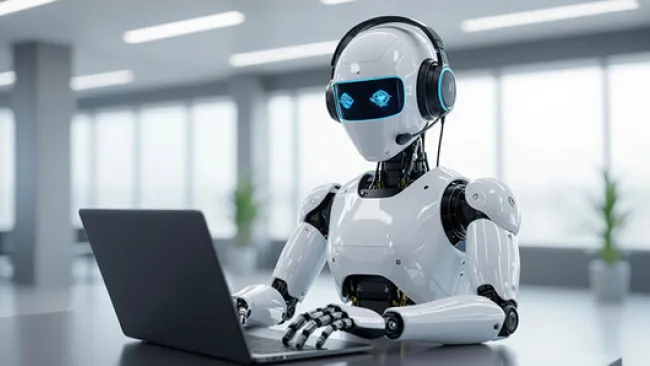When it comes to standing out in the ultra-competitive retail landscape, personalization is key. Delivering customer experiences (CX) that feel tailored to each shopper’s individual needs is how retailers can differentiate themselves from the competition and grow loyalty.
These stats from McKinsey & Co. bear out what many retailers have long known:
- 76% of consumers get frustrated experiences aren’t personalized
- Brands that excel at personalization generate 40% more revenue from those efforts than their counterparts
- 67% of shoppers want relevant product and service recommendations
Modern shoppers expect a “luxury” customer experience that feels bespoke and customized, even when they’re not shopping at a luxury price point.
At the same time, advances in AI offer undeniable advantages brands can’t afford to ignore: in ease, efficiency, and cost benefits.
So how can retailers retain their personal touch and empathy in the AI age? Striking the right balance of AI and humans, where each empowers the other to work better and smarter, is important.
Know what requires a human touch, and what doesn’t
Personalization is key to a great retail experience, but not all interactions require a human touch. When customers simply want to check on the status of an order, for instance, they’re not looking for a highly-personalized or empathetic experience – they just want simple information that’s accurate and quick.
Don’t waste your most valuable resources, your people, where they’re not truly needed. Delegate tasks to intelligent automation where it makes sense, so your associates can focus on more impactful interactions that boost loyalty, grow customer satisfaction, and drive sales.
Examine your customer journey to determine which touchpoints and customer intents require empathy or a personal connection, and which ones can be diverted to automation without sacrificing CX. The top five customer intents for the retail sector are:
- Request a refund
- Check order status
- Ask about shipping or pickup
- Cancel an order
- Request product specifications
There are ways retailers can serve these intents through automation in a way that still feels personalized, proactive, and tailored to individual customers’ needs. Yet some, like seeking a refund or canceling an order, may require some empathy depending on the circumstances.
Determine which intents can be handled by solely automation, which ones would benefit from automation handing off to an associate, and which ones need a human interaction from the start.
Use AI to empower (not replace) associates
AI can handle many tasks, but associates remain essential. They are the front line of a brand and a vital part of contact centers and CX.
When used well, AI doesn’t replace associates; it enables them to do their jobs better and faster. When simple and repetitive tasks are taken off associates’ plates by automation, associates are freed up to focus on more nuanced and meaningful interactions where they can provide more value to your brand.
One of AI’s greatest benefits is its ability to comb through mountains of data and put relevant information at associates’ fingertips quickly. Use it to help associates find relevant information faster, so they can help customer more quickly.
When TTEC’s own help desk associates struggled to access the information they needed during calls, a generative AI-enabled tool helped increase the knowledge base’s accuracy and made it easier to navigate. The results were quick and significant: 6% of associates who used it said they used it for every or every other call, 83% said it reduced stress on the job, and AHT fell for all tiers of associates.
Keep in mind that AI is only as good as the data informing it so investing in high-quality data annotation. Automation can work wonders, but only if there are people behind it, helping to train it and ensure it’s reaching its full potential.
Seek help when you need it
It may seem overwhelming to try to strike the right balance between AI and humans, especially for brands that lack this type of expertise in-house. And there’s no time to waste, since just one bad experience is enough to turn shoppers off a brand.
But you don’t have to do it on your own. Working with an expert partner that understands AI, the retail industry, and how to optimize contact centers is one way to eliminate guesswork. Tapping proven strategies and tools lets you skip costly trial and error and go straight to what drives results.
With the right combination of human touch and technology, you can deliver the type of personalized, empathetic experiences that keep customers coming back.















